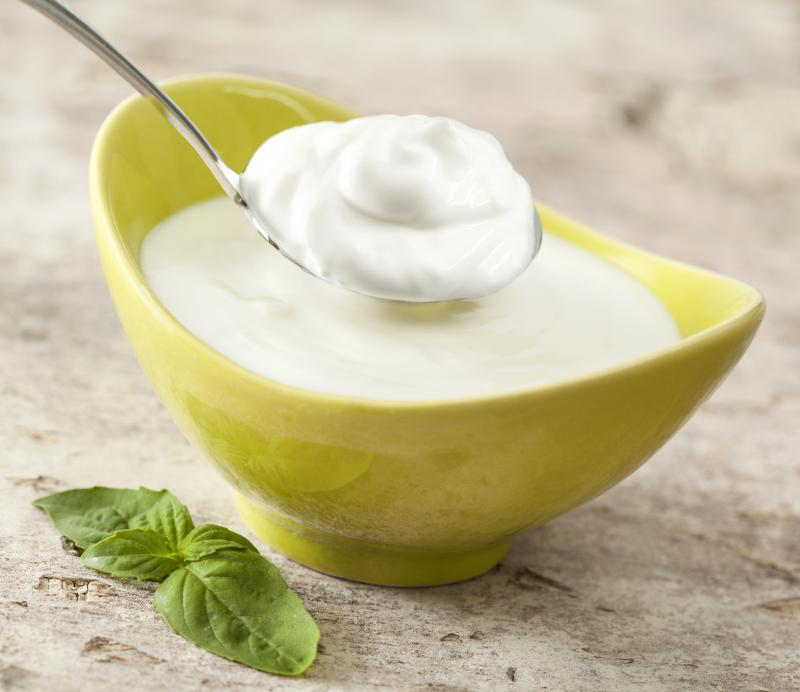 There's a way to make yogurt even more of a superfood - use a clay pot for the fermentation process.
There's a way to make yogurt even more of a superfood - use a clay pot for the fermentation process.A recent study involving Chinese adults has shown that higher consumption of yogurt can potentially reduce the prevalence of newly diagnosed nonalcoholic fatty liver disease (NAFLD).
A total of 24,389 adults were recruited in this cross-sectional study. The researchers estimated yogurt consumption with the use of a validated self-administered food frequency questionnaire. Abdominal ultrasonography was used in NAFLD diagnosis. Finally, logistic regression models were generated to examine the association between yogurt consumption categories and newly diagnosed NAFLD.
In the unadjusted model, higher yogurt consumption was dose-dependently associated with a lower prevalence of newly diagnosed NAFLD (1 time/week of yogurt consumption: unadjusted odds ratio [OR], 0.75, 95 percent confidence interval [CI], 0.68–0.83); 2–3 times/week: unadjusted OR, 0.62, 95 percent CI, 0.57–0.67); ≥4 times/week: unadjusted OR, 0.58, 95 percent CI, 0.53–0.53; ptrend=0.0001). [Eur J Clin Nutr 2020;74:491-499]
After adjusting for age, sex and body mass index, the benefits of yogurt consumption decreased but remained significant (1 time/week: OR, 1.10, 95 percent CI, 0.89–1.14; 2–3 times/week: OR, 0.93, 95 percent CI, 0.84–1.03; ≥4 times/week: OR, 0.85, 95 percent CI, 0.76–0.96; ptrend<0.01). In sensitivity analysis, an inverse association was also observed.
“These results suggest that yogurt consumption may potentially contribute to the reduction of NAFLD,” the researchers said. “Future longitudinal studies are warranted to confirm this finding.”
In other studies, a double-blind, randomized controlled trial demonstrated how probiotics, which can be found in yogurt, improved liver aminotransferases levels in patients with NAFLD. There was evidence as well of an association between yogurt consumption and improved metabolic profiles in humans, which could have protective effects against NAFLD. [Eur Rev Med Pharm Sci 2011;15:1090-1095; Nutr Res 2013;33:18-26; Eur J Nutr 2019;58:409-422]
The exact mechanisms behind the benefits of yogurt consumption remain unclear, but several aspects may partially explain these findings. First, yogurt is rich in probiotics, which can delay NAFLD development by suppressing the lipopolysaccharide and hepatic toll-like receptor 4 signaling pathway. Second, probiotics have anti-inflammatory, antioxidant and immune-modulating activity. [Sci Rep 2017;7:45176; Am J Clin Nutr 2014;99:425-426; Am J Clin Nutr 2014;99:535-542]
In addition, yogurt is a good source of proteins, minerals (eg, calcium, magnesium, potassium) and vitamins. Studies have shown that higher intake of calcium contained in yogurt may increase whole-body fat oxidation. In an animal study, calcium and vitamin D combinations were found to protect against NAFLD development. [Int J Obes Relat Metab Disord 2003;27:196-203; Phys Sportsmed 2009;37:29-39; Eur J Nutr 2018;57:731-740]
“Finally, yogurt is seen as a nutrient-dense food linked with healthy diet habitats,” the researchers said. “Therefore, this association was partly explained by a healthier diet.”
The current study had some limitations, including recall bias due to self-reported dietary information, the use of abdominal ultrasound in NAFLD diagnosis instead of the gold standard liver biopsy, and possible imprecision in the measurement of confounding factors included or residual confounding.